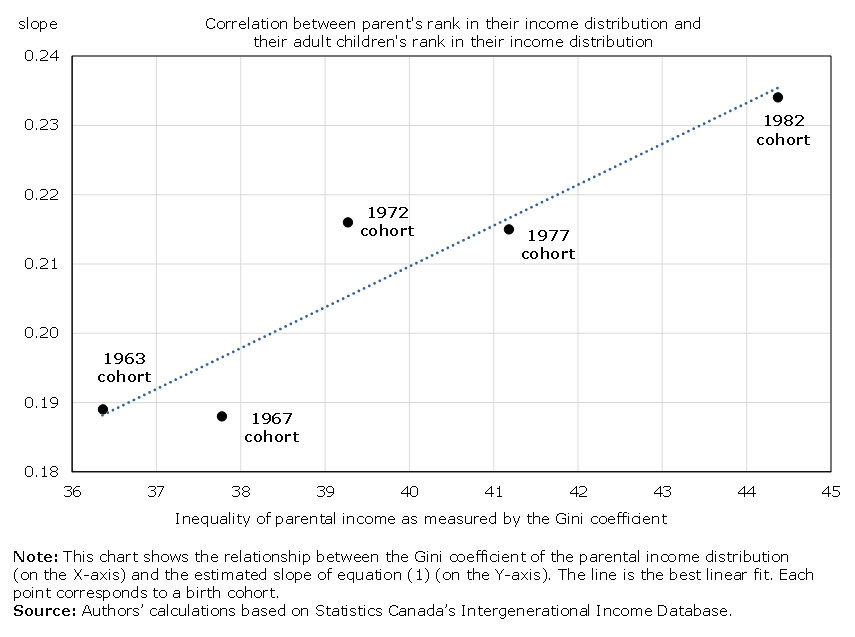Study: Trends in Intergenerational Income Mobility and Income Inequality in Canada
Archived Content
Information identified as archived is provided for reference, research or recordkeeping purposes. It is not subject to the Government of Canada Web Standards and has not been altered or updated since it was archived. Please "contact us" to request a format other than those available.
Released: 2021-02-10
A study released today examines the relationship between the position of individuals in the income distribution and the positions of their parents in that distribution at an earlier time. Of particular interest is the likelihood that children of parents from the bottom, middle or top of the income distribution themselves end up at a similar point in the distribution later in life. Results indicate that, in Canada, the relationship between the income position of parents and that of their adult children has become stronger. When an individual's position in the income distribution is more dependent on their parents' position, it means that both movement up or down the income distribution and intergenerational income mobility are reduced.
Using administrative tax data, the study identifies five cohorts of Canadians born from 1963 to 1985. Individuals in these cohorts were observed first as teens living with their parents and then again as adults in their late 20s and early 30s. The three measures of intergenerational income mobility used in the study all indicate that the relationship between the positions of parents and children in the income distribution became stronger across the five cohorts. For example, the probability that a child from the bottom 20% of the parental income distribution would remain in the bottom 20% later in life increased from 27.1% among the cohort born from 1963 to 1966 to 32.6% among the cohort born from 1982 to 1985. Likewise, the correlation between a child's income rank as an adult and their parents' income rank increased from 0.189 to 0.234 across cohorts, indicating a reduced likelihood of income mobility. This is shown on the vertical axis of the infographic 1. This trend was evident among both sons and daughters.
In addition to decreased income mobility across birth cohorts, the inequality of parental income across cohorts, as measured by the Gini coefficient, has increased. This is shown on the horizontal axis of the infographic, which presents a visualization of the relationship between income inequality and income mobility, known in the literature as the Great Gatsby Curve. When we combine all these elements, we see that Canada has "moved up" the Great Gatsby Curve over the five cohorts, characterized by increasing income inequality among parents and decreasing income mobility among children. This is observed at the national level and in most provinces.
Products
The study Trends in Intergenerational Income Mobility and Income Inequality in Canada, part of the Analytical Studies Branch Paper Series (11F0019M), is now available.
Contact information
For more information contact us (toll-free 1-800-263-1136; 514-283-8300; STATCAN.infostats-infostats.STATCAN@canada.ca).
To enquire about the concepts, methods or data quality of this release, contact Marie Connolly, Groupe de recherche sur le capital humain, Université du Québec à Montréal (514-291-7790; connolly.marie@uqam.ca).
- Date modified:


